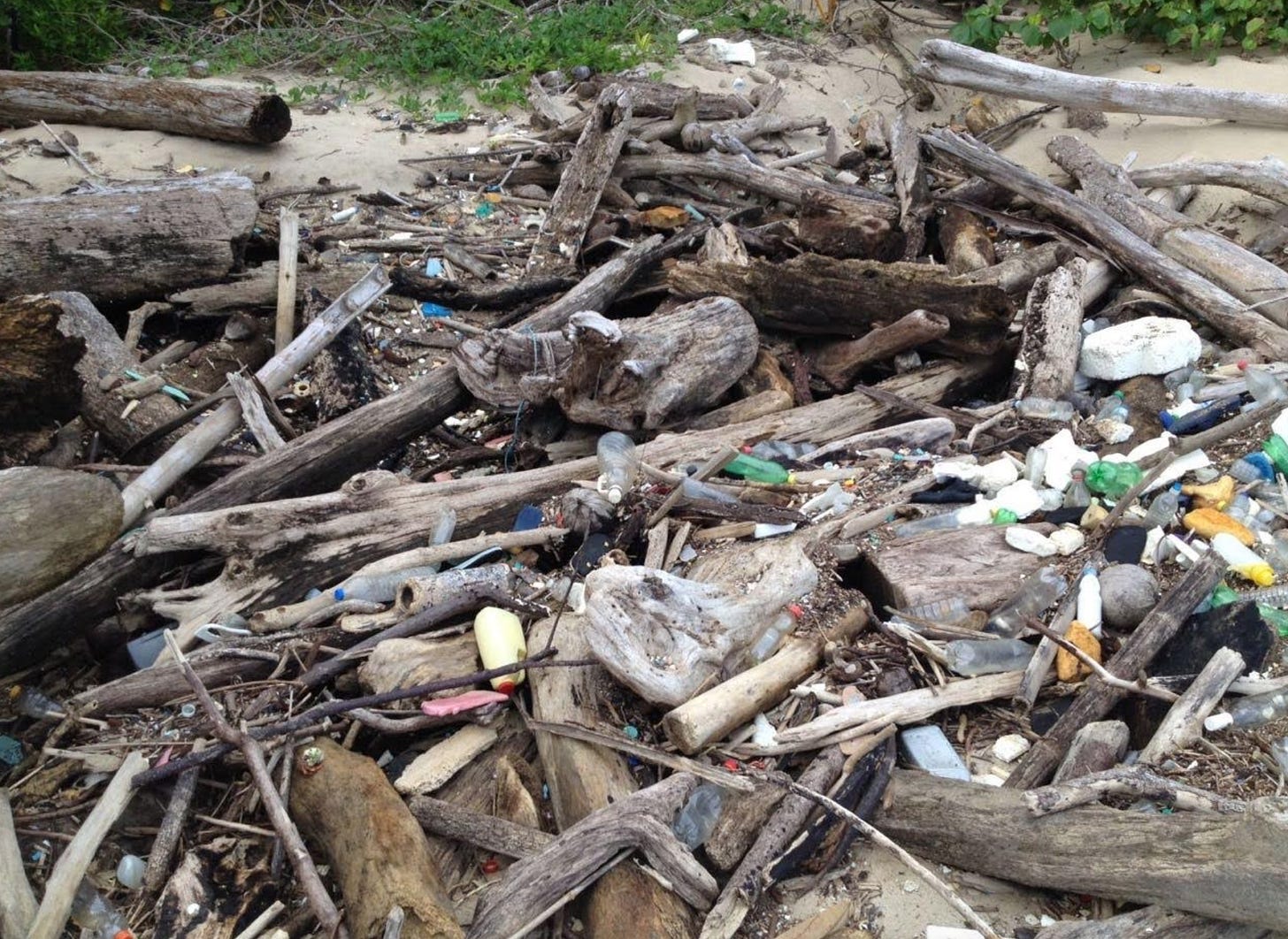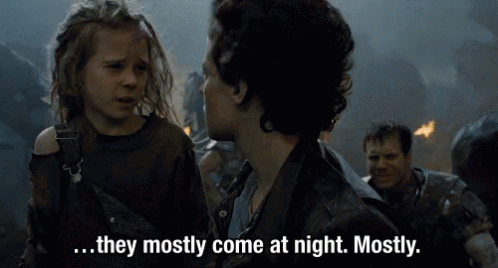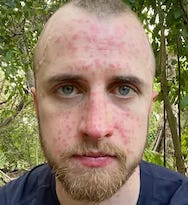I survived eight days on a desert island
While pondering where to go on holiday, I came across a company called Desert Island Survival. Give them money, goes the pitch, and they’ll take you to an uninhabited tropical paradise and teach you how to live like a castaway.
What else am I gonna do, go to Center Parcs? I sign up faster than you can say “Tom Hanks”, and in January 2023 I pack a bag with survival essentials (mostly just suncream) and board a plane to Central America. A ferry and a speedboat later and I’ve left civilisation.
My new home is basically your cartoon caricature of a desert island1: turquoise sea lapping against a palm-tree-lined beach, crisp white sand encircling a luscious jungle. This place is so beautiful, in fact, that it’s probably only got a couple of years left before some faceless conglomerate paves it over with concrete. Until then I’m under strict instructions not to share its name online - God forbid the Instagram crowd starts showing up - so let’s just call it Sandfly Isle.
Sandfly Isle is big enough to get lost in, but small enough that you can walk from one side to the other in about half an hour. It currently has a population of ten: eight of us survivalists plus the two instructors. Between us we have six nationalities and a thirty-year age range of which I’m roughly in the middle. The lead instructor, a forty-something American named Tom who looks like he spends a lot of time in the sun, explains the itinerary. For five days - the “training phase” - he’ll teach us how to hunt, gather, build shelter, make fire, and everything else our primitive ancestors called work. Then in the “isolation phase”, three days long, the instructors will retreat to a safe distance and it’s up to us to apply what we’ve learned.
Now, to those who expressed concern beforehand for my safety, I say: it’s a survival course. You think I’m as stupid as Chris McCandless? And I confess, I’m playing this game on easy mode. If you’re going to be shipwrecked then Sandfly Isle isn’t a bad place to wash up: it’s rich in resources, free of predators, and doesn’t have many ways to kill you, except perhaps by dehydration. The main things to watch out for are falling coconuts - be careful what you stand under - and the manchineel, a poisonous fruit that looks like an apple and, apparently, tastes delicious for the first few bites before your throat catches fire. I avoid the forbidden fruit, and I’m led not into temptation by devilish snakes or gullible wives.
There’s a lot to learn, starting with mankind’s oldest invention: fire. Sadly it’s not enough to just rub two sticks together, as I discovered many years ago on the playground. Tom shows us some better methods including the bow drill, hand drill and fire plough. These work but they’re hard; each failed attempt leaves me feeling like my arms might fall off. But whenever we do get a fire started (and by “we” I mean “someone else”, because I’m crap at this), it’s immensely satisfying to my caveman brain. Now I know how Prometheus felt.
For food we fish, but when they don’t bite we eat coconut meat. For hydration, we’ve cheated, bringing a literal boatload of bottled water with us. I’m sorry, but the only other option during the dry season is coconut water, and as delicious as that is, it’s not much good for brushing your teeth. Other survival skills include rope-making, trap-setting, weaving things from palm fronds, and various practical uses for a coconut shell. I turn out to be talentless at all of them, but I guess I’ve got to start somewhere.
On day 5 I’m standing chest-deep in the sea with my fishing rod when four well-tanned locals pull up next to me on a motorboat. Fishermen. They gesture at the distant camp and ask if we’re making a movie - not a bad guess, as Sandfly Isle has been used in the past as a filming location. I try to correct them in my rusty guiri Spanish, but it’s hard enough to explain in my native language. They look at me like I’ve told them I came here from Venus to wrestle polar bears.
I won’t have this fishing rod for the survival phase, but - as Tom’s taught us - I can make my own using cord and a plastic bottle. Fortunately, or perhaps unfortunately, plastic isn’t hard to find around here.
You’re probably aware that there’s an Alaska-sized garbage patch floating in the Pacific. You might not have considered - I hadn’t - that not all oceanic plastic ends up in the middle; much of it gets washed ashore. Sandfly Isle looks nice from a distance, but the high-tide line looks like this:
Every beach in the world now gets coated with debris like this; it’s just less noticeable in inhabited areas where there’s someone to clean it up. On desert islands there’s nothing to stop it accumulating, and the results are depressing. It’s yet another reminder of the damage we’re doing to our planet.
Other than that, I’m having a great time. The training phase is comfortable, like a warm and cozy camping trip. We sleep in hammocks under bug nets, and eat hearty lunches and dinners beneath a shelter we assemble from logs and palm fronds. The shelter isn’t strictly necessary (it doesn’t rain once, and we don’t need help staying warm) but it adds to the aesthetic.
Civilisation fades into a distant memory. I can’t remember the last time I went this long without using the Internet, but it was probably so long ago that The Simpsons was watchable. Whatever the case: damn it feels good to disconnect. Nuclear war could have broken out yesterday and I wouldn’t have heard about it.
On the sixth morning we lug some stuff to the other side of the island, leaving most of our conveniences behind at base camp. Thus begins the isolation phase, although none of us feels hardcore enough to truly “isolate”: we eight stick together for the full three days.
Now, if you’re wondering why I dubbed it “Sandfly Isle”, you’d understand if you’d spent a night here. The sandflies, the one thing that stops this place being paradise, come out at dusk and attack every inch of exposed skin. I must be tasty, because the bastards just won’t leave me alone no matter much repellent I slather myself in. It was fine in my bug-proof hammock, but now I have no such luxury.
The trick is to move inland, away from the beach. (There’s a reason they’re called sandflies.) But then you need to build something comfy to sleep on, and my attempts go about as well as Homer building a kennel. Bedtime arrives, but my crudely-improvised bamboo frame manages, somehow, to be even less comfortable than the hard ground beneath it. I last about ten minutes before giving up and going back to the beach. How bad can it be?
I sleep restlessly on the sand, dreaming of chickenpox and stinging nettles. When the sun comes up, I’m itchy, so I sit up in my sleeping bag and call to the first person I see.
“Gina, does my face look bitten at all?”
She looks at me. Then she bursts out laughing.
I have seven versions of the same conversation that morning. People emerge one by one from their self-constructed Hiltons (seems they all did a far better job of this than I), take one look at me and wince. Then they laugh. “George, what happened to your face?” But no-one has a mirror, so I’m the last to see it. Eventually someone finds a phone that still has battery:
I look at that picture and think “fuck this”. Then I sneak back to base camp and steal a hammock.
I guess the main thing I’ve learned from this adventure is that if I ever get stranded on a desert island for real, I’m dead. It’s possible to survive out here indefinitely if you’ve got the skills, or at least the fortitude, but… well, let’s just say I need more practice. I’ve had a good time, but on the morning of day 9 when the boat arrives to fetch us, I’m ready to go home.
But despite the weariness and the bug bites, I’ve truly had one of the best weeks of my life. I’ve camped before, I’ve dabbled in “survivalism”, I’ve been to tropical islands, I’ve gotten away from it all, I’ve seen some stunning natural beauty, but I’ve never done anything like this that combined all those things into such a unique and memorable package. I’d call it a once-in-a-lifetime experience, but I’m tempted to try it again.
Mostly it was just plain fun. But it was also a great way to relax, step back and reflect. Maybe I could have got the same effect by locking myself in a dark room for eight days, but I’m pretty sure the surroundings made a difference. At the end of the day I’m just a hairless monkey running around on a gigantic space rock, but I live in this thing called “civilisation” that makes us humans forget what we are. Getting into nature - really getting into nature in this most primitive of manners - has a quasi-psychedelic way of stripping back the bullshit and reminding one of what’s important. And maybe it’s coincidence, but in the month I’ve been home I’ve made all kinds of positive changes and am feeling better than ever about my habits, my priorities, and the year ahead.
Life-changing? It just might have been.
DesertIslandSurvival.com. Check them out.
(Note: since I didn’t take any kind of electronic device to the island with me, none of the photos above are my own. Some were taken by other members of my group, others are from previous Desert Island Survival expeditions to the same island. All photos used with permission.)
Yes, “desert island” is acceptable terminology even if it rains. Get over it.








